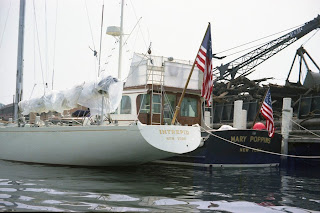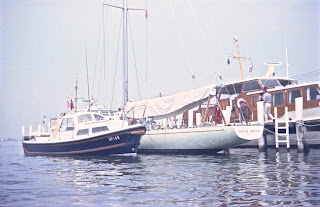 |
| going to the finish |
 |
| rounding the first leeward mark |
 |
| liberty |
 |
| australia II |
 |
| before the start |
 |
| the morning after |
 |
| Marble House |
 |
| the CUP in 1983 |
1983, a date in America’s Cup history that will forever be remembered. The unthinkable happened. the New York Yacht Club and the United States lost a cup that they had held since 1851 (having won it as an upstart nation)
For me, the right thing happened for all the wrong reasons. As hard as it was to see then, the America’s Cup had outgrown the New York Yacht Club. This forced change breathed new life into the competition. People can think that it was the cause of the problems we have seen since, I do not believe this to be true. It would have happened anyway. It is the world we live in. Change always comes difficultly.
Newport, oddly was routing for the underdog, Australia,. This was spiting your face by cutting off your nose. Tourism in Newport was closely tied to the America’s Cup.
Another thought, “Liberty” led the seventh and final race for five of the six legs. sailing brilliantly against a clearly strong rival. “Liberty” was not a slow boat, just not a faster boat. The Australian boat was using Ian Howlett’s bendy mast, giving them “free” sail area. The wing keel was probably more a psychological weapon than an effective design improvement. It was long from being understood. It did make a stiffer boat allowing a lower lead package.
Curiously, the C-class may be facing the same sort of challenge to change, For so long being the step-sister, they may now find themselves in the center of significant changes, namely the America’s Cup in multihulls.
Where is “LIberty” today??


































